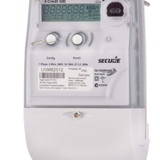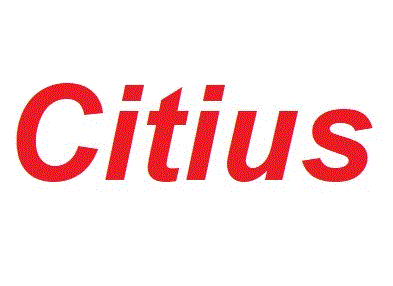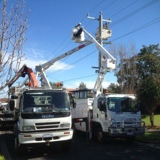Information
-
Document No.
-
Audit Title
-
Client / Site
-
Conducted on
-
Prepared by
-
Location
-
Personnel
-
Region
-
Contractor/s
-
Job Description
-
Date
-
Time
1. Site Risk Management
-
Is a relevant SWMS available and a Site Risk Assessment (JSA) completed for the work?
-
Has the JSA been signed and dated daily and the SWMS identified?
-
Have sub-contractors (e.g. Traffic Management) been inducted onto the site and signed onto the JSA?
-
Has the Traffic/Pedestrian Management Plan been identified/created and available on site and documented on the JSA?
-
Overall, is the JSA adequate for the worksite?
2. Personnel Protective Equipment
-
Is approved PPE clothing worn and is wrist to ankle coverage maintained?
-
Is approved safety footwear worn?
-
Is other appropriate PPE utilised and in good condition? (e.g. hard hats, hearing and eye protection)?
3. Traffic and Pedestrian Management
-
Has the appropriate Traffic and Pedestrian Management Plan been identified, and does it meet all requirements?
-
Does the actual traffic/pedestrian layout reflect the Traffic/Pedestrian Management Plan?
-
Is pedestrian traffic safely controlled through the worksite?
-
Are traffic signs and devices legible and undamaged?
-
Are suitable barriers provided to protect the public from the work site?
-
Where site is to be left overnight, are adequate protection measures, lighting and night guidance provided?
-
Are traffic management personnel wearing high visibility PPE?
4. Forms/Documentation
-
Is there a job file available on site?
-
Does the job file contain a daily job sheet / work instruction?
-
Is a hot work permit required and are there any hot work restrictions?
-
Does the job file contain any CES information where required?
5. Skills and Competency
-
Do all personnel have Passports on site?
-
Is all training and are all authorisations current for the functional role of the Passport holder?
-
Are all personnel licensed/registered for their functional role?
-
Are apprentices adequately supervised?
6. Vehicles/Plant
-
Are all plant operators licensed as required?
-
Are logbooks available for all plant on site and have they been maintained appropriately?
-
Are EWPs within the electrical test due date?
-
Are EWPs within the weight test due date?
-
Have pre-start checklists been completed?
-
Are all vehicles on site registered?
-
Are all vehicles/plant within their service range?
-
What is the general condition of the vehicles/plant (cleanliness)?
-
Is all equipment carried on vehicles adequately secured?
-
Is there appropriate identification on contractor vehicles?
7. First Aid
-
Is there an intact First Aid kit?
-
Is the kits location marked on the vehicle?
-
Do the contents appear to be complete, in good condition and within expiry dates
8. Tools and Equipment: Testing and Condition
-
Are all electrical tools and PETE items within their test date range?
-
Is all electrical test and measurement equipment in test date?
-
Has any test equipment been modified? (e.g. probes extended)
-
Are HV operating gloves and mats in test date?
-
Are HV sticks in test date?
-
Are the gas bottles within expiry date and stored appropriately?
9. Environment and Hazardous Goods
-
Are there any chemicals in use and is there a MSDS available for the chemical??
-
Are any hazardous materials and dangerous goods separately stored and labelled?
-
Are environmental risks identified and controlled in the JSA?
-
Are there any control measures to manage spills and leaks? (e.g. spill kit)
-
Is Bushfire mitigation equipment available? (e.g. knapsack, rakes permit)
10. Working at Heights
-
Is the correct fall prevention equipment used?
-
Are harnesses, pole belts, lanyards and any other fall prevention equipment in test date?
-
Are Rescue Kits available, in test and in position?
-
Are ladders in use in an adequate condition?
-
Are ladders in use setup correctly?
11. Worksite/Work Practices
-
Effective Safety Observers in place?
-
Adequate cover utilised? (e.g. mats, LV covers, HV covers, etc.)
-
Are Safe Approach Distances maintained?
-
Are service heights compliant?
-
Sag is correct and clear of trees?
-
Is the service correctly terminated and its weight held by the clamp and hooks?
-
Are service tails or pole box leads adequately supported by under arm brackets?
-
Neutral tags fitted at pole, pit and house ends?
-
Meters straight
-
Meters and metering equipment sealed?
-
Correct labelling? (e.g. house, unit, or Photovoltaic Embedded Generators installed)
-
Are appropriate tests being carried out? (e.g. megger, NST, polarity, check, load, phase sequence)
-
Conduit straight up pole and cable lengths correct?
-
Correct conduit, fusing, conductor size and connections?
-
Cable attached to correct side of pole? (away from traffic)
-
Number of saddles?
-
Correct labelling on FMJB?
-
Is pole label attached "Underground in the Vicinity"?
-
Pit and pole guards installed to standard?
-
Concrete cut around pit and paving reinstated?
-
Cable length correct in pit?
-
Cable ends capped in pit?
-
Lanterns straight and level?
-
Bracket installed to construction manual specifications?
-
Correct cable used? (UV rating)
-
Work site left clean and reinstated with top soil (where required)
-
Comments
-
Overall Audit Rating
- 1
- 1.5
- 2
- 2.5
- 3
- 3.5
- 4
- 4.5
- 5
- 5.5
- 6
- 6.5
- 7
- 7.5
- 8
- 8.5
- 9
- 9.5
- 10











